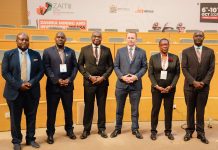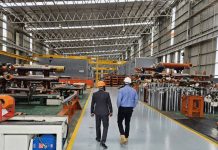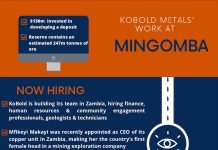In Part 1 of Zambia’s history of copper production, we reflected on the country’s progression from the early days of large-scale production of the red metal almost 100 years ago, to the challenges that led to the re-privatisation of the industry at the end of the last century. In Part 2, we take a look at how Zambia’s copper mining journey continued in the years that followed, when production levels and economic growth once again took centre stage.
Rising from the ashes
Once Zambia’s government had made the decision to re-privatise the country’s mining sector, the majority of the shares in the national mining entity, Zambia Consolidated Copper Mines (ZCCM), were unbundled and sold to private investors, in a process that was concluded in 2000. The government became a minority shareholder through the state mining investment company, ZCCM Investment-Holdings (ZCCM-IH) and, to this day, retains substantial shareholdings in Zambia’s biggest mines.
Zambia’s nationalised mining industry had been starved of investment for decades, which is ultimately what led to its demise. Much of the technology and machinery that was in place in 2000 dated back to the mid-20th century, with old smelters releasing unacceptably high levels of sulphur dioxide into the surrounding areas.
With the wheels of privatisation turning, foreign capital poured into Zambia’s mining sector. The new companies invested heavily in new machinery, new mining methods, and the latest mineral processing and metal-extraction technologies. Cutting-edge technology was harnessed in order to mine the low-grade copper ores that, due mostly to financial constraints, had been overlooked. Production levels shot up. In 2004, over 400 000 tonnes of finished copper was produced, rising from just 250 000 on the cusp of re-privatisation.
When the copper price did start to rise in 2004, this propelled an existing upward trend. More investment had been channelled into the mining industry between 2000 and 2004 than in the preceding decades combined. As such, Zambia was perfectly positioned to take advantage of the subsequent copper boom, which helped propel the country through a decade of economic growth.
A growth era
Two major greenfield projects were begun during this period of buoyancy and investment. In April 2005, the newly-commissioned Kansanshi mine in Solwezi — majority owned by First Quantum Minerals (FQM) — began production, yielding 70 000 tonnes of copper that first year. Construction of Lumwana copper mine (where mineral deposits had been identified, but never exploited) began in 2006, with copper first produced in December 2008. In July 2011, ZCCM-IH opted to sell its stake in Barrick Gold Corporation, which became the sole owner of what is today Barrick Lumwana Copper Mine.
These investors brought the latest technologies with them, enabling the mines to process large quantities of low-grade copper ores. But the new mines were far more than a symbol of optimism in a previously capital-starved industry. The fact that they took root beyond the established mineral wealth of the Copperbelt Province, in North-Western Province, was a game-changer for Zambia’s economy.

Out with the old, in with the new
Meanwhile, in the Copperbelt, the operations that Mopani had bought from ZCCM in 2000 were in a state of chronic dilapidation. The company had no choice but to begin a complete overhaul of the mine workings — the smelter, the refinery, and the shafts — if operations were to continue beyond 2019. An initial US$ 500 million was spent replacing the mid-20th century smelter with a modern equivalent that transformed efficiency and, crucially, cut sulphur dioxide emissions by 95%. By 2006, the smelter had been completed and the company turned its attention to the refinery, which — despite the unforeseen challenges of the financial crisis, and attendant slump in the copper price — was completed a few years later, on time.
In 2010, Mopani began focusing on the most substantial phase of renewal: its underground mining infrastructure. The youngest of the antiquated shafts dated to 1971, with four others going back to the 1930s. Glencore, the principal investor, committed to a decade-long investment programme to completely replace the system of shafts that access the Nkana and Mufulira ore bodies. Billions of dollars have been invested during this twenty-year plan to transform Mopani into a world-class mine, extending its life far into the future.
“But the new mines were far more than a symbol of optimism in a previously capital-starved industry.”
Encouraging investment
Back in North-Western Province, in 2009 — just a year after the global financial crisis — FQM took the decision to make their largest Zambia-based investment yet. Approximately 150 kilometres away from North-Western Province’s capital, Solwezi — where Kansanshi mine was based — the company undertook to set up its Trident project, consisting of the US$ 2.1 billion Sentinel Copper Mine, and the Enterprise nickel mine. Zambia’s government saw the potential for FQM’s latest project to make a huge dent in the country’s post-crisis recovery, and it responded by tweaking the fiscal regime in a way that was acceptable to all parties and, most importantly, conducive to investment.
With the right conditions in place, FQM began pouring millions of dollars into North-Western Province. The building of Sentinel mine itself was a five-year process, in which thousands of Zambians were employed, and more than 265 000 tonnes of equipment was transported to the site. It was an enormously ambitious undertaking. At the outset, the rural area where the mine’s construction was planned was without an electricity supply, and an entire power grid had to be built. FQM laid 600 kilometres of power lines, traversing the country.
But the vision went beyond sustaining the mine’s operations. FQM began building a brand new town around the mine site, where employees and their families could live, and businesses could flourish, initially to service mining activity. Kalumbila town was built with solid infrastructure, a sewerage system, street lighting, and its own airport — everything that was needed to attract the many businesses that soon sprouted, from world-class commercial and leisure facilities, to schools, medical facilities, and housing for its 5 000 residents.
Unlike so many of the world’s mining towns before it, Kalumbila was built to be an economic hub that will be self-sustaining long beyond the life of Sentinel mine. Building a town from scratch cost US$ 200 million, but the investment would be worth it, for generations to come.
“Kalumbila was built to be an economic hub that will be self-sustaining long beyond the life of Sentinel mine.”
From geographical to economic diversification
Investment was the order of the day. The owners of what had become Zambia’s four major mines — Barrick Lumwana, FQM Kansanshi, Mopani and KCM (Konkola Copper Mines) ploughed US$ 12.4 billion into the country’s mining sector between 2000 and 2014. A portion of this investment was used to modernise and refurbish ageing infrastructure at mines in the Copperbelt Province, but most of the capital was put to work expanding and building new operations in what came to be known as “the new Copperbelt” — namely, Northwest Province.
With copper output hovering at around 760 000 tonnes in 2013, Zambia had, essentially, regained production levels last seen in the late 1960’s, with the new mining operations in North-Western Province fuelling this momentum. Direct employment in the industry had risen from 22 000 when nationalisation ended, to 90 000 by 2013.
As the centre of gravity of Zambia’s copper-mining industry radiated outwards from the Copperbelt to North-Western province, so prosperity spread too. The country now had a second economic hub in and around Solwezi — and, soon, Kalumbila too — in which employment levels and standards of living were higher than this relatively underdeveloped province had ever previously experienced. The mines in North-Western province created waves of economic activity, as new livelihoods were created in new sectors, and agriculture was stimulated to feed a growing population. It was the economic “multiplier effect” in action.
A watershed moment
When the US$ 2.1-billion Sentinel mine came online in August 2015, it represented the single-largest upfront infrastructure investment in Zambia, since the Kariba Dam. With a substantially increased capacity for copper production, Zambia was far better-equipped to respond to global copper demand. In 2015, the World Bank predicted that Zambia’s copper production would reach almost 1.5 million tonnes by 2019, thereafter requiring a renewed surge of investment to continue on an upward trajectory. Tremendous growth was within close reach. It was a promise of growth that Zambians believed would not slip through their fingers again.
***
Keep an eye on the website or our social media platforms for Part 3 of this article on Zambia’s copper production history, or use the “History of Production” tag below to locate all three parts any time.
See also: Zambia’s history of copper production — Part 1



























It leaves much to be desired . We just gave away our livelihood for a cup of soup like Esua.
Rich information to be read by all Zambian